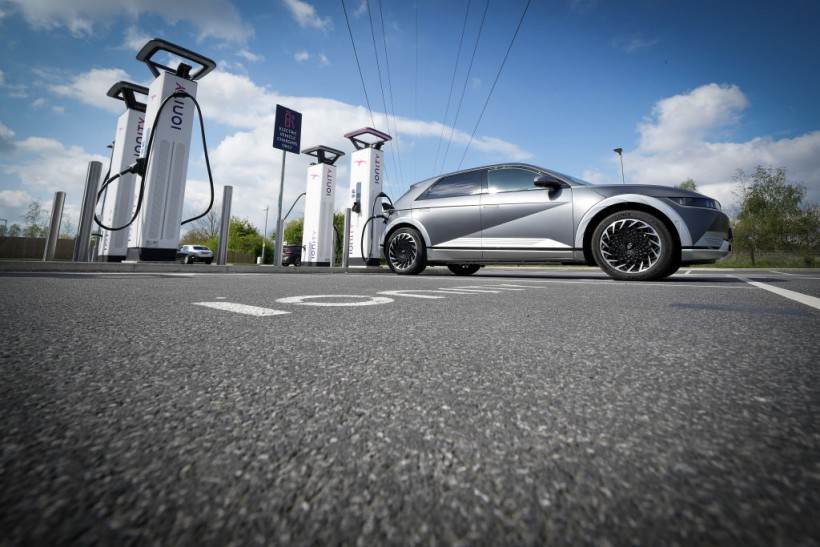As electric vehicles (EVs) become increasingly prevalent on roads, questions arise about their safety, particularly concerning the risk of electrocution.
Recently, a tragic incident involving a Tesla submerged in a pond in Texas has prompted concerns about EVs' potential dangers. However, experts weigh in to address these concerns and provide insights into the safety measures in place.
In an unfortunate incident involving Texas-based CEO Angela Chao, her Tesla plunged into a pond on a private Texas ranch, which eventually led to her untimely death.

(Photo : Christopher Furlong/Getty Images)
Can You Get Electrocuted by an EV?
Despite the EV being submerged underwater, Northeastern University experts asserted that the likelihood of electrocution posed by electric vehicles in such scenarios is minimal.
Sanjeev Mukerjee, a professor of chemistry and chemical biology at Northeastern University, explained that electric vehicle battery compartments, including those of Tesla, are meticulously sealed and safeguarded against external elements.
Mukerjee emphasized that while lithium-ion batteries, commonly used in EVs, can pose risks if damaged, the design of EVs ensures significant protection against such incidents.
The US Department of Energy outlines stringent regulations and standards governing electric vehicles' construction, particularly concerning battery pack protection and sealing.
Tesla vehicles, renowned for their advanced engineering, incorporate built-in sensors capable of deactivating the battery in the event of a collision or rollover, further enhancing safety measures.
However, Mukerjee highlighted concerns regarding electric scooters and bikes, which may lack adequate battery protection compared to electric cars. He underscored the importance of ensuring proper safeguarding, especially in outdoor settings where exposure to water and damage is more likely.
Read Also: Elon Musk Warns AI and EV Growth Could Strain Electricity and Transformer Supplies by 2025
Risk of Electric Shock
In the event of a submerged electric vehicle, Mukerjee reassured that safety mechanisms, including the isolation of charging ports and damaged cables, mitigate the risk of electric shock. He stressed the necessity for first responders to undergo specialized training in electric vehicle safety to manage such incidents effectively.
Rescuers must exercise caution to avoid damaging high-power busbars within the vehicle, which could pose a risk of electric shock if compromised. However, according to the experts, the passenger compartment of EVs remains insulated from such hazards.
When an EV is on dry land, the presence of water typically does not pose a risk of electrocution. However, during the charging process at a charging station, Mukerjee advised drivers to inspect the cable for any signs of damage.
If any damage is detected, it is advisable not to insert the cable into the charging port. In conclusion, while concerns regarding the safety of electric vehicles in various scenarios persist, experts asserted that stringent safety measures and protocols are in place to mitigate potential risks.
According to reports, Chao was believed to have died from drowning.
Related Article: GM Partners with Niron Magnetics to Develop Eco-Friendly Electric Motor Magnets, Reducing Dependency on China










